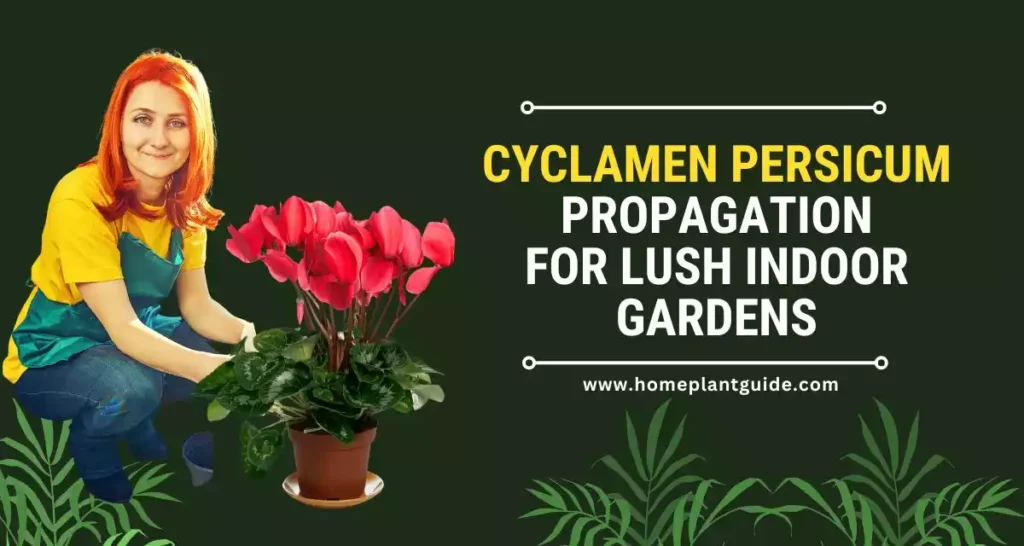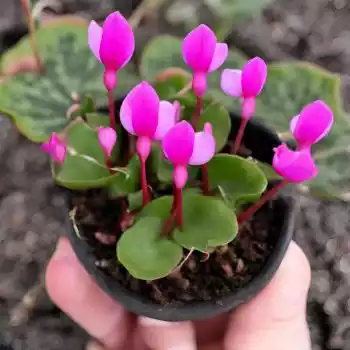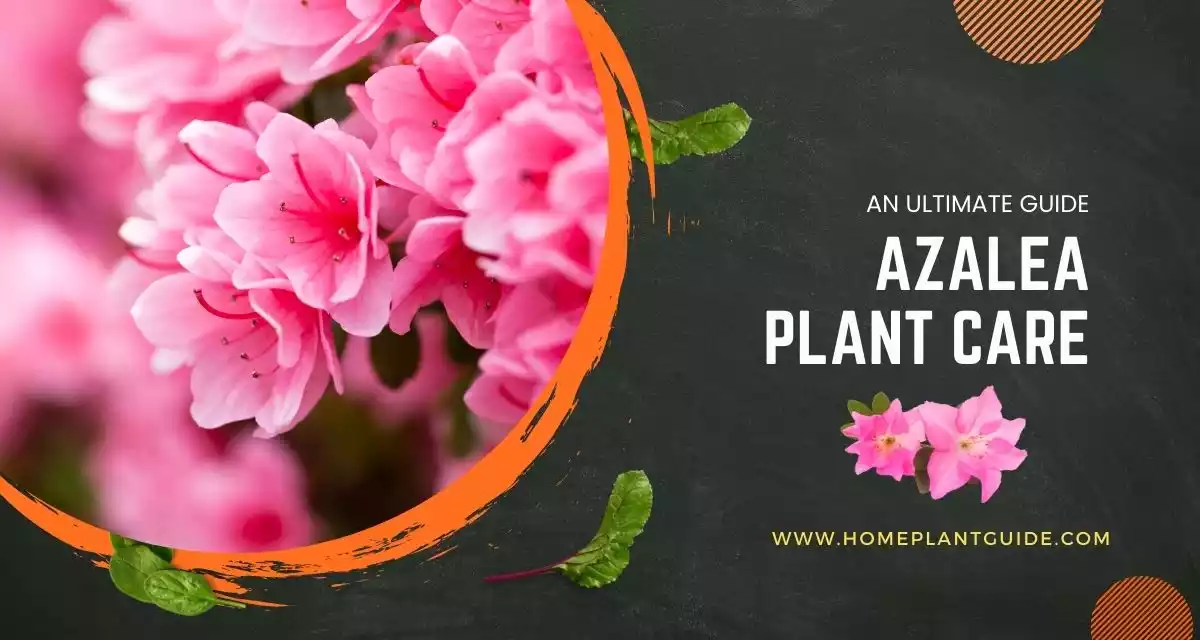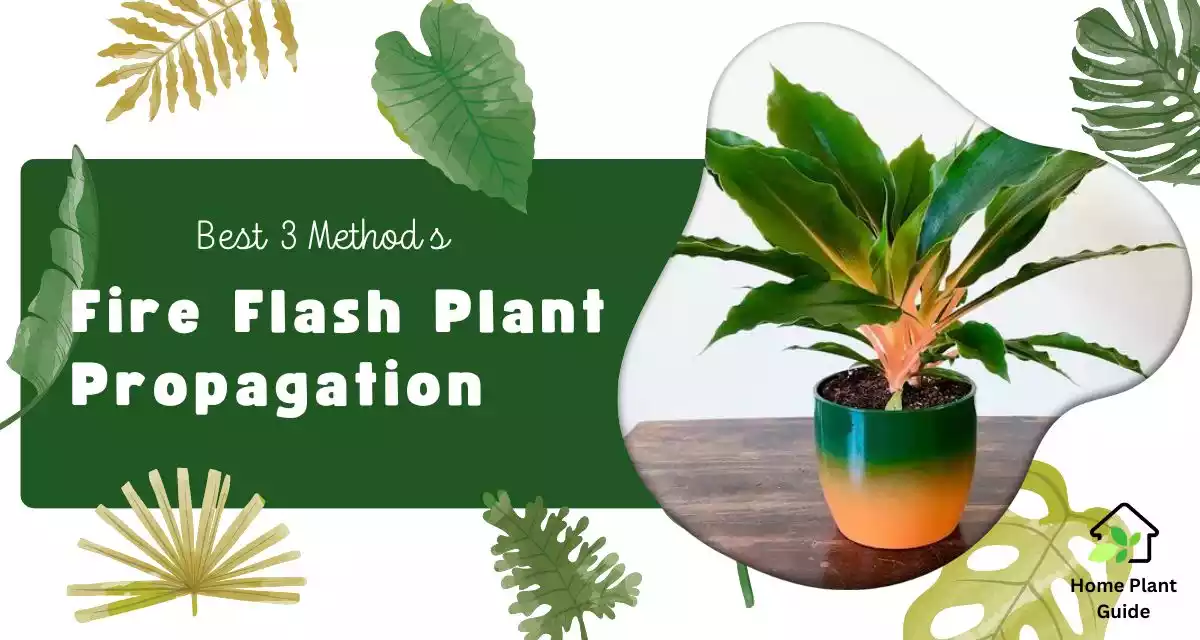Cyclamen persicum propagation is not only easy to care but also it can grow in low-light conditions. The Cyclamen persicum, also known as the Persian violet, is a popular winter-flowering houseplant known for its delicate blooms and attractive foliage.

If you’re looking to multiply your cyclamen persicum or gift this beautiful plant to friends and family, then propagation is the best way to go.
There are two main methods for propagating cyclamen persicum. One is seed propagation and the other is tuber division. Dive into expert tips and step-by-step instructions for successful propagation.
In This Article
Specification of Cyclamen Persicum
| General Name | Persian violet, florist’s cyclamen |
| Scientific Name | Cyclamen persicum |
| Plant Family | Primulaceae |
| Type of Plant | Cyclamen |
| Mature Size | 6-12 inches (15-30 cm) tall, 8-12 inches (20-30 cm) wide |
| Flower color | White, pink, red, or purple, with reflexed petals |
| Leaves | Heart-shaped, dark green with marbled patterns |
| Light | Bright, indirect light |
| Type of Soil | Requires well-draining soil |
| Water Requirement | Water regularly, but avoid overwatering |
| Native Area | Eastern Mediterranean and Middle East |
| Temperature | Ideal 68-77°F (20-25°C) |
| Pests and diseases | Aphids, mealybugs, gray mold |
| Bloom Time | Winter (December to March) |
Cyclamen Persicum Propagation By Seed Method
Seed propagation is a slower method, but it can be rewarding to watch your cyclamen persicum grow from scratch.

Here are the steps on how to do it:
[Step #1]
Collect seeds
The best time to collect seeds is in late spring or early summer, when the seed pods have turned brown and started to split open. Allow the pods to dry completely before removing the seeds.
[Step #2]
Prepare the seed starting mix
Use a well-draining potting mix, such as a mixture of perlite and coir. Moisten the mix thoroughly before sowing the seeds.
[Step #3]
Sow the seeds
Sow the seeds thinly on the surface of the potting mix and press them gently into the soil. Do not cover the seeds, as they need light to germinate.
[Step #4]
Provide warmth and humidity
Place the seed tray in a warm location, ideally between 68-77°F (20-25°C). Cover the tray with plastic wrap to create a humid environment.
[Step #5]
Germination
Germination can take anywhere from 6-12 weeks. Keep the soil moist but not soggy during this time.

[Step #6]
Once the seedlings have emerged, remove the plastic wrap and gradually acclimate them to lower humidity.
[Step #7]
Transplant the seedlings
Once the seedlings have developed several true leaves, you can transplant them into individual pots. Use a well-draining potting mix and pot them up to the base of the leaves.
[Step #8]
Care for your young cyclamen persicum plant
Water them regularly and provide them with bright and indirect light. With proper care, your cyclamen persicum plants should flower in 2-3 years.
Cyclamen Persicum Propagation By Tuber Division Method
Tuber division is a faster method of propagation, but it is important to note that it can stress the mother plant.

The best time to divide tubers is in late summer or early fall, when the plant is dormant. Here’s how to do it:
[Step #1]
Carefully remove the cyclamen persicum plant from its pot.
[Step #2]
Using a sharp, sterilized knife, cut the tuber into several sections, each with an eye or growing point.
[Step #3]
Allow the cut surfaces to dry for a few days before planting.
[Step #4]
Plant each tuber section in a pot filled with a well-draining potting mix.
[Step #5]
Water the newly planted tubers and place them in a cool, dark location.
[Step #6]
After a few weeks, you should start to see new growth. Once the new plants have developed several leaves, you can move them to a brighter location.

[Step #7]
Water them regularly and provide them with bright, indirect light. With proper care, your cyclamen persicum plants should flower in the winter.
Pro Tips for Successful Cyclamen Persicum Propagation
- Use sterile tools when handling tubers and seeds to prevent the spread of disease.
- Keep patience, Propagation takes some time. so do not get discouraged if you do not see any results immediately.
- Provide your cyclamen persicum with the right growing conditions, including bright and indirect light. Must be placed in cool temperatures and use well-draining soil.
- With a little care and attention, you can easily propagate your cyclamen persicum plant in your home.
Cyclamen Persicum Propagation in Water
If you want to grow and propagate Cyclamen persicum in water, as per recommendation this is not possible and unlikely to be successful. While some plants can root and grow in water alone but cyclamen persicum requires specific soil and nutrients for healthy development.
Why water propagation is not suitable for Cyclamen persicum?
Lack of Support
The tuber, stores energy for the plant. It needs anchoring in soil to prevent rot and provide stability. Water can not able to support this alone.
Nutrient Deficiency
Soil contains essential nutrients to grow these plants but these nutrients are unavailable in water. So without them, the plant will struggle to grow and may eventually die.
Root Rot
The constantly wet environment in water can encourage root rot. So it can create fungal disease that damages and kills roots.
Is cyclamen persicum toxic to cats?
Yes, Cyclamen persicum is toxic to cats. All parts of the plant, including the leaves, flowers, and underground tuber are the toxic components.
While mild ingestions may only cause:
- Excessive drooling
- Vomiting
- Diarrhea
Larger ingestions, especially of the tuber, can lead to more serious symptoms like:
- Heart arrhythmias
- Seizures
- Kidney damage
- Even death
Here are some special tips to keep in mind:
- The smaller the cat, the more susceptible they are to poisoning.
- Symptoms may not appear immediately and could take up to 12 hours to manifest.
- If you suspect your cat has ingested any part of a Cyclamen persicum, contact your veterinarian immediately or call a pet poison control center.
FAQ:
Q: Do cyclamen smell good?
Yes, it has a good smell. They are highly fragrant, with a floral scent not dissimilar to Lily of the Valley.
Q: How toxic is cyclamen?
It is harmful to your pet and can cause salivation, vomiting, and diarrhea.
Q: Do cyclamen purify the air?
All cyclamen are not able to purify the air. Only The Red Cyclamen can filter toxins like formaldehyde, benzene, and trichloroethylene from the air to your home.
Q: How long do cyclamen bloom?
Some cyclamen can bloom for up to eight weeks, but the normal range of blooming is five or six weeks.
Q: How long can the cyclamen plant live?
Cyclamen is a perennial. it can live indoors and outdoors for dozens of years if it is placed in a suitable atmosphere.
Read More Healthy Indoor Plantation:





